Summary
Discovering Rujm el-Hiri’s Mysteries
Deep within the Golan Heights lies Rujm el-Hiri, a captivating prehistoric site shrouded in mystery. Its name translates to “stone heap of the wild cat” in Arabic, while in Hebrew, it’s known as Gilgal Refaim, or the “wheel of giants”. This ancient megalithic monument, composed of over 40,000 rocks, forms several concentric circles with a tumulus at the center. Researchers estimate it dates back to the Early Bronze Age, suggesting it’s over 5,000 years old. The site’s purpose remains a topic of debate among archaeologists, with theories ranging from an astronomical observatory to a place of ritualistic significance. Despite its unclear origins, Rujm el-Hiri continues to intrigue scholars and visitors alike, beckoning a deeper exploration into the past.
Get your dose of History via Email
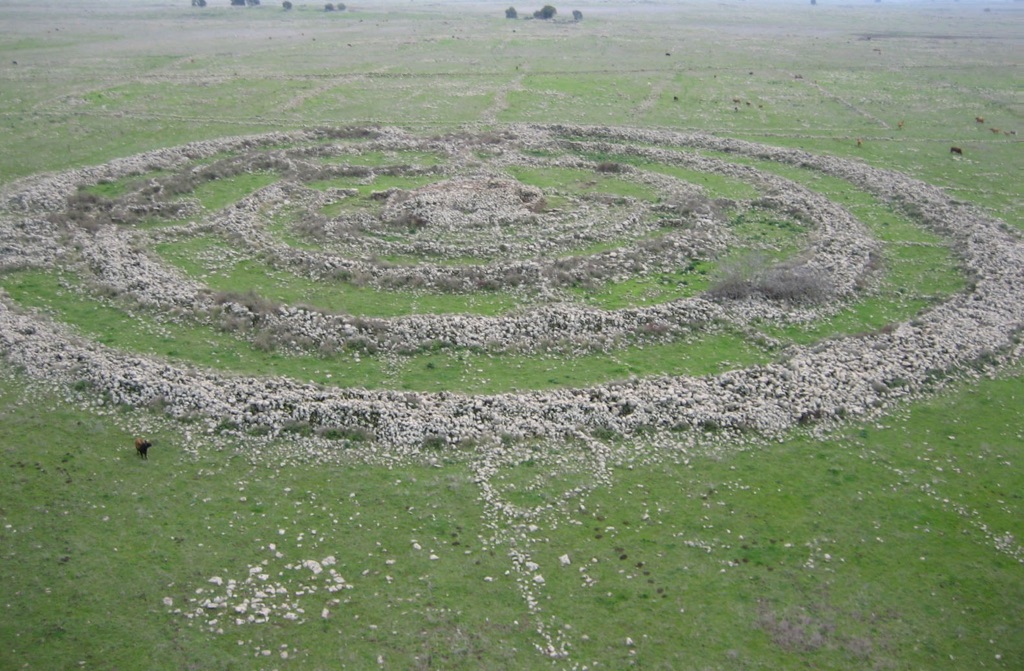
The Architectural Intrigue of Rujm el-Hiri
The massive stone circles of Rujm el-Hiri inspire awe and raise questions about its construction. Archaeologists puzzle over how ancient people built this structure with such precision. The site’s design, aligning with the summer solstice sunrise, suggests it could have been a complex calendar system. This sophisticated arrangement supports theories that ancient civilizations possessed advanced knowledge of astronomy. Rujm el-Hiri’s central burial mound, accessible through a narrow passage, further adds to the site’s enigma. Burial customs during this period were intricate, often signaling the presence of societal elite. Yet no substantial human remains have been found here, posing more questions than answers about the site’s true function and the people who constructed it.
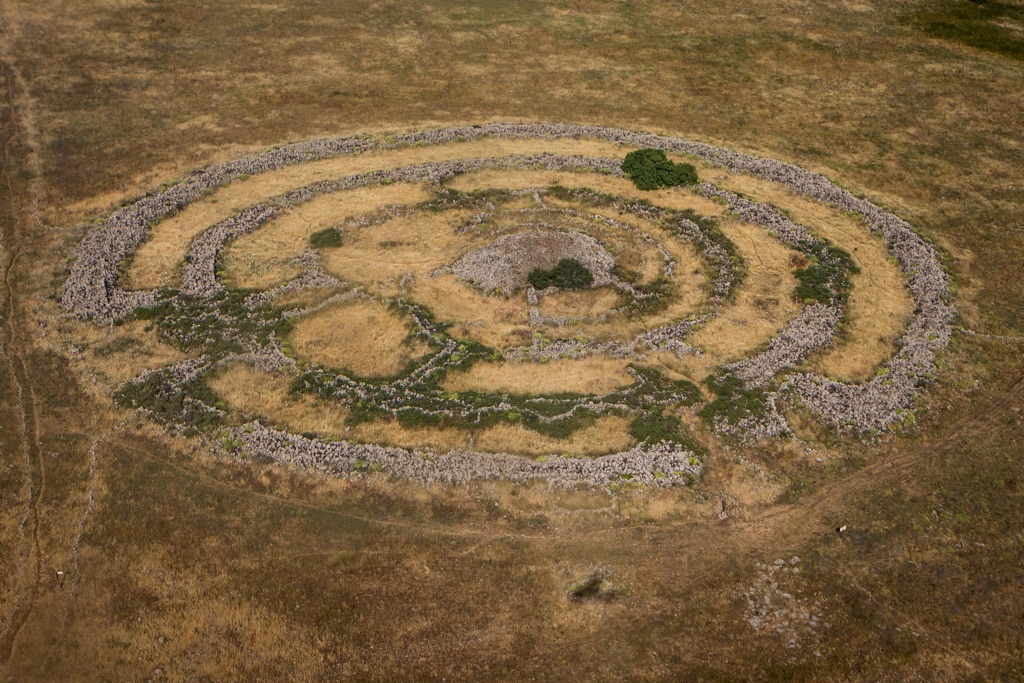
The Cultural and Historical Significance of Rujm el-Hiri
Rujm el-Hiri is not only an archaeological treasure but also a cultural one, deeply entrenched within local lore and regional history. Local legends speak of giants who once roamed the land, referencing the site’s Hebrew name. Its significance extends into modern times, as it’s become a symbol of the Golan Heights’ rich and diverse past. Rujm el-Hiri’s location in a politically sensitive region adds complexity to preservation efforts. Nevertheless, the site offers invaluable insights into the Early Bronze Age Levant civilization’s life and beliefs. It beckons for protective measures to ensure its survival for future generations to unravel its secrets and fully understand its historical importance.
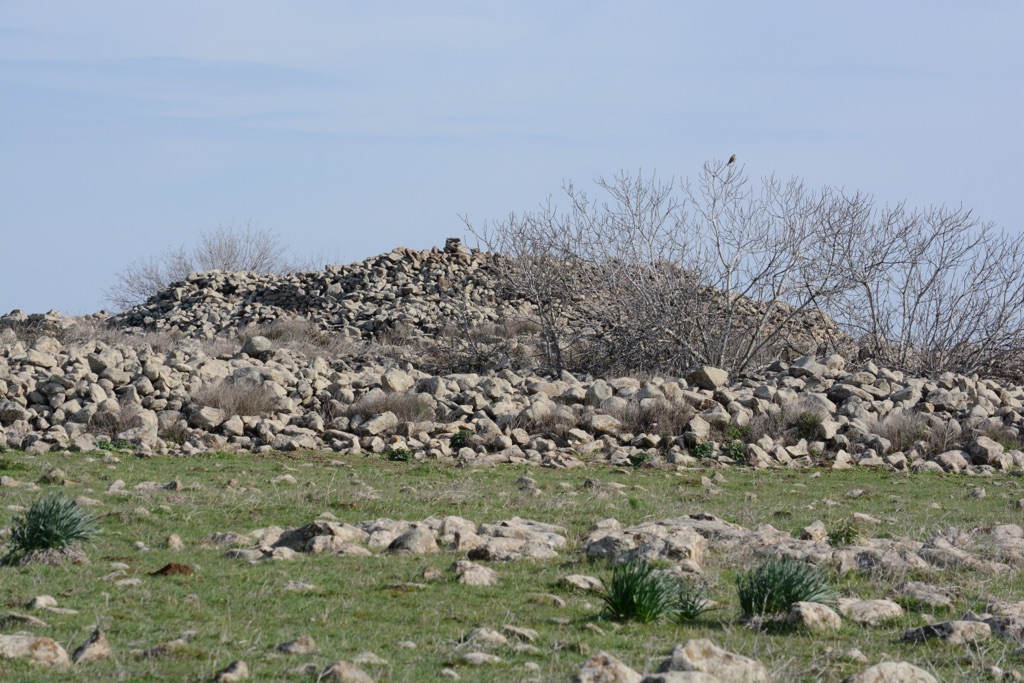
Historical Background of Rujm el-Hiri
The Early Bronze Age Origin
Carved into the windswept plains of the Golan Heights rests Rujm el-Hiri, a testament to human ingenuity dating back to the Early Bronze Age. This monumental structure, possibly erected around 3000 BCE, provides a window into the past that few other sites can offer. The builders of Rujm el-Hiri remain a mystery, but their legacy speaks volumes. They moved thousands of basalt rocks without the wheel or domesticated animals, creating a sprawling complex. Through precise engineering, they gave future generations a structure that whispers stories of those who once walked these lands.
A Window into Astronomical Knowledge
At Rujm el-Hiri, stones align with celestial bodies, offering clues about the site’s purpose. Archaeologists believe this alignment suggests it may have functioned as an observatory. The builders clearly understood the movement of the sun and stars, displaying intricate knowledge for their time. As the sun rises on the summer solstice, it shines through a strategically placed opening, illuminating the central burial chamber. Thus, Rujm el-Hiri stands as evidence of early astronomical practices, long before modern technology made such observations commonplace.
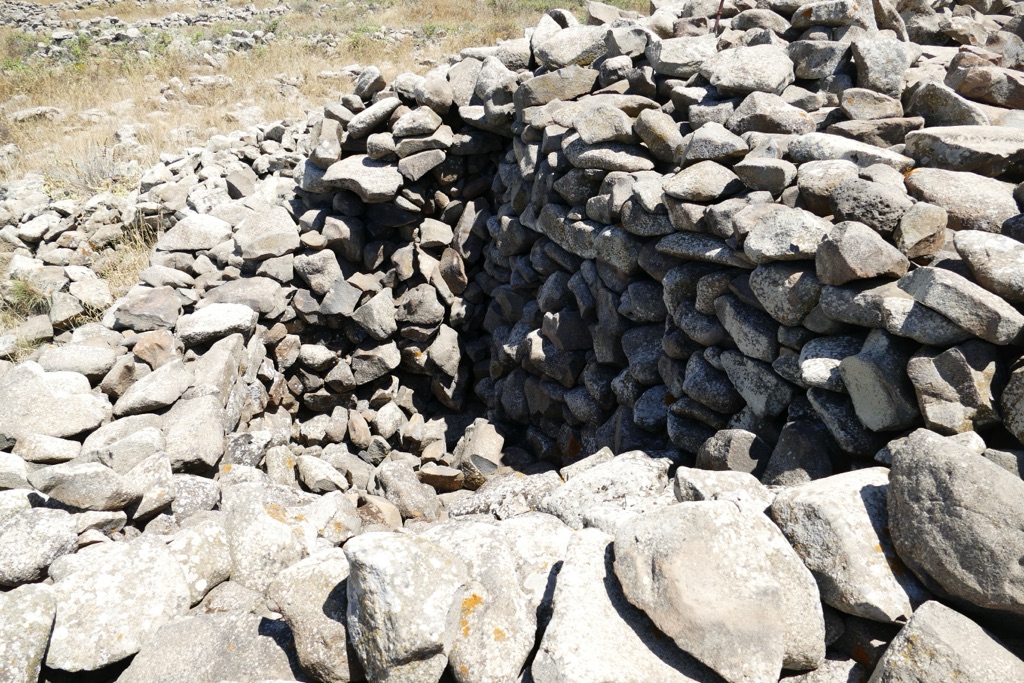
With over 40,000 rocks arranged in concentric circles, Rujm el-Hiri’s design intrigues and baffles. Some posit it served as a burial site for ancient elites, though little human remains have surfaced. Others argue it was a place for ritual or social gatherings, central to the community’s spiritual life. Yet, without written records from the era, these theories remain educated guesses. Each new discovery at the site adds a piece to the puzzle, slowly revealing the landscape of the Early Bronze Age Levant.
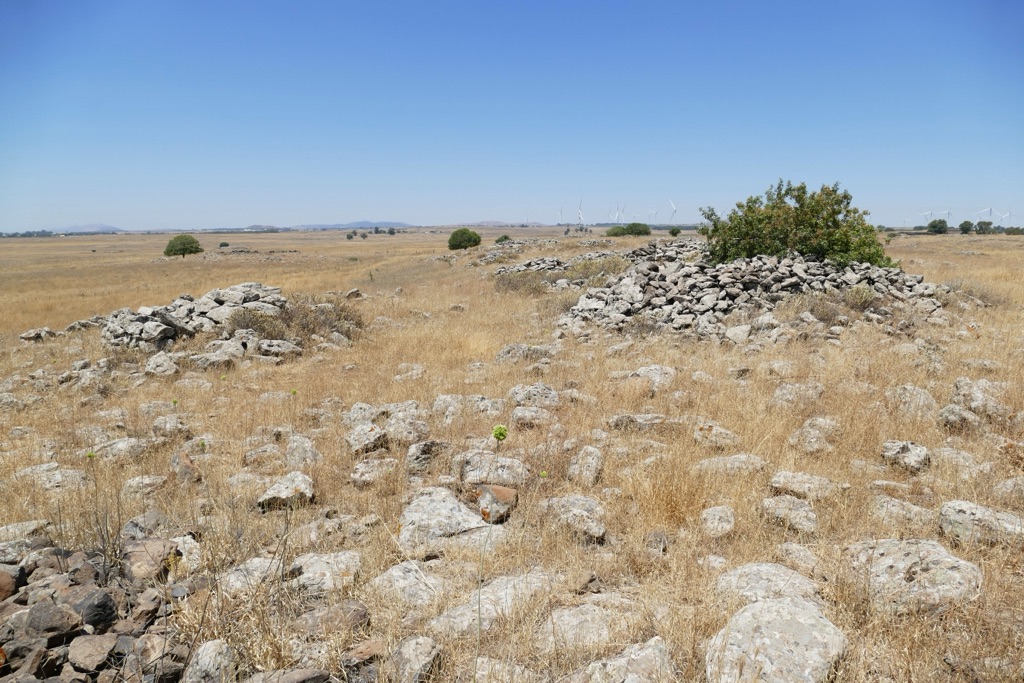
Legends and Cultural Impact
Beyond its archaeological merit, Rujm el-Hiri occupies a place in the cultural narrative of the region. Legends abound of giants who once inhabited the land, possibly inspiring the Hebrew name Gilgal Refaim, or ‘Wheel of Giants.’ This folklore underscores the site’s mystique and the lasting impact it has had on the collective memory of local communities. As an essential piece of heritage in the Golan Heights, Rujm el-Hiri has become a symbol of continuity amid a landscape marked by historical turbulence.
Today, Rujm el-Hiri stands as a guardian of history in an ever-changing world. It beckons travelers, scholars, and dreamers alike to gather and ponder the lives of those who built this silent monument. The enigma of its true purpose may never be fully understood, but its allure remains undiminished. As preservation efforts continue, one can hope that Rujm el-Hiri will endure, inspiring awe for generations to come and serving as a bridge to our distant past.
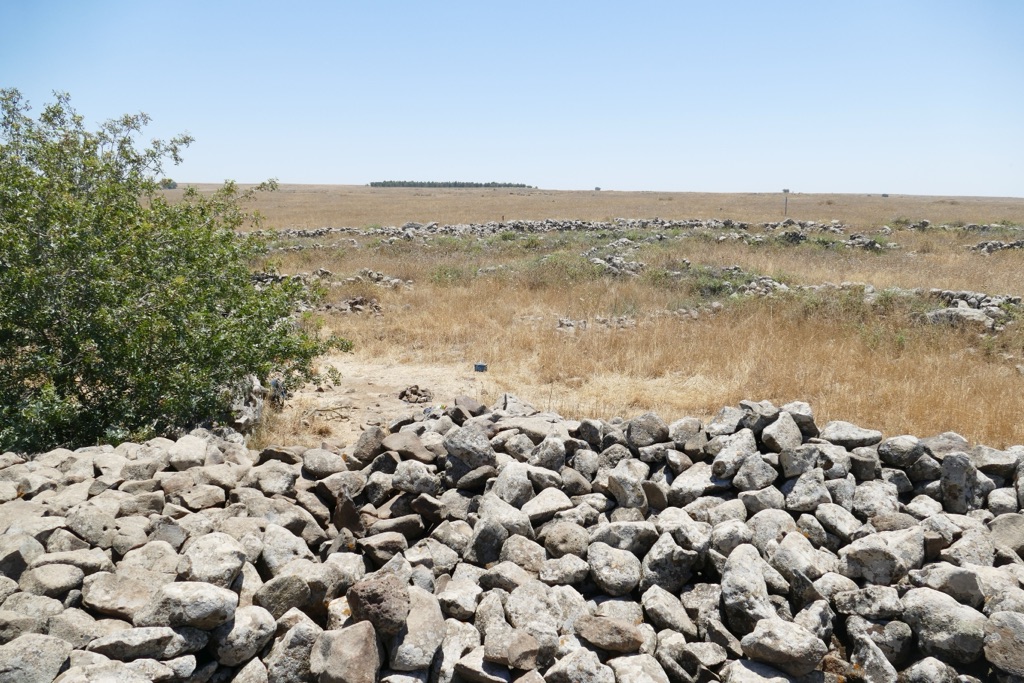
The Discovery of Rujm el-Hiri
Unearthing an Ancient Enigma
In the rugged expanses of the Golan Heights, the imposing stone circles of Rujm el-Hiri lay hidden for millennia. Its discovery in the 1960s unfolded by chance as archaeologists combed the region. Israeli archaeologist Shmaryahu Gutman led the initial survey, recognizing the site’s potential significance. The circular patterns viewed from above indicated a deliberate design. Scholars knew they had stumbled upon an ancient marvel begging for further investigation.
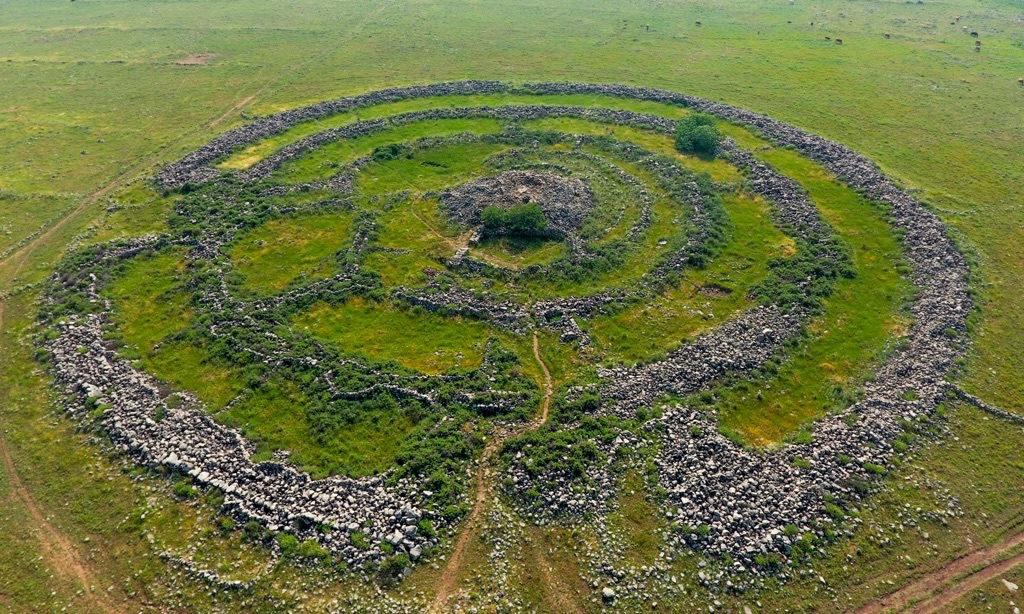
A Deeper Look Beneath the Surface
Subsequent excavations unveiled Rujm el-Hiri’s complex layers, each telling its own story. More researchers joined the quest, drawing from disciplines like archaeology, astronomy, and geology. The investigations revealed that the site wasn’t a random assembly of stones. Rather, it was a sophisticated endeavor that showcased human achievement in the Early Bronze Age. Specialists marveled at the effort required to build such a monument without modern tools or machinery.
As diggings continued, intricate details surfaced. The central cairn, once likely covered by a mound of earth or stones, suggested a grave or memorial. Yet, the expected human remains were notably missing, leading to many hypotheses. Artefacts like pottery shards and flint tools implied daily activities, perhaps even ceremonial practices. These findings opened fresh dialogues on the rites and daily life of the region’s ancient inhabitants.
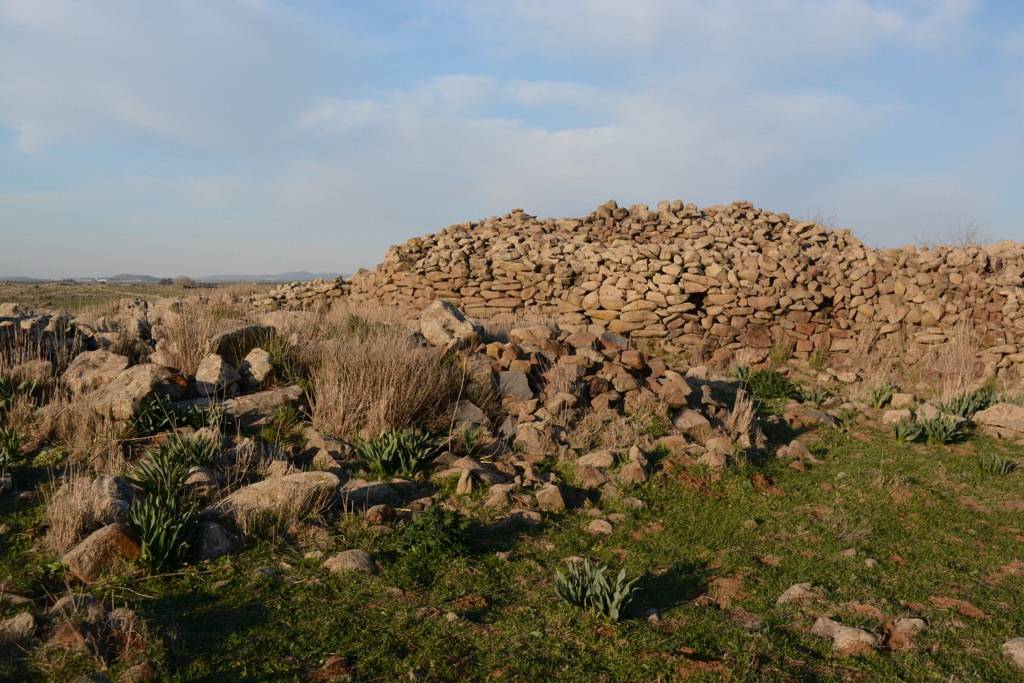
Mapping the Heavens: An Astronomical Purpose?
Further studies compelled experts to consider Rujm el-Hiri in the context of celestial events. The site’s alignment with the solstices and equinoxes hinted at an astronomical observatory’s traits. This discovery turned heads in the scientific community. It suggested an extraordinary grasp of celestial patterns by the ancient architects. Interest surged as the site promised to offer glimpses into the scientific understanding of our ancestors.
Over decades of study, Rujm el-Hiri has risen from obscurity to international fame. Today, it stands as a treasured historical artifact and a focal point for archaeological and astronomical research. The site draws visitors and scholars eager to absorb its history and unravel its mysteries. As a monument to human curiosity and engineering, its discovery has enriched our understanding of the distant past, inspiring awe and further exploration.
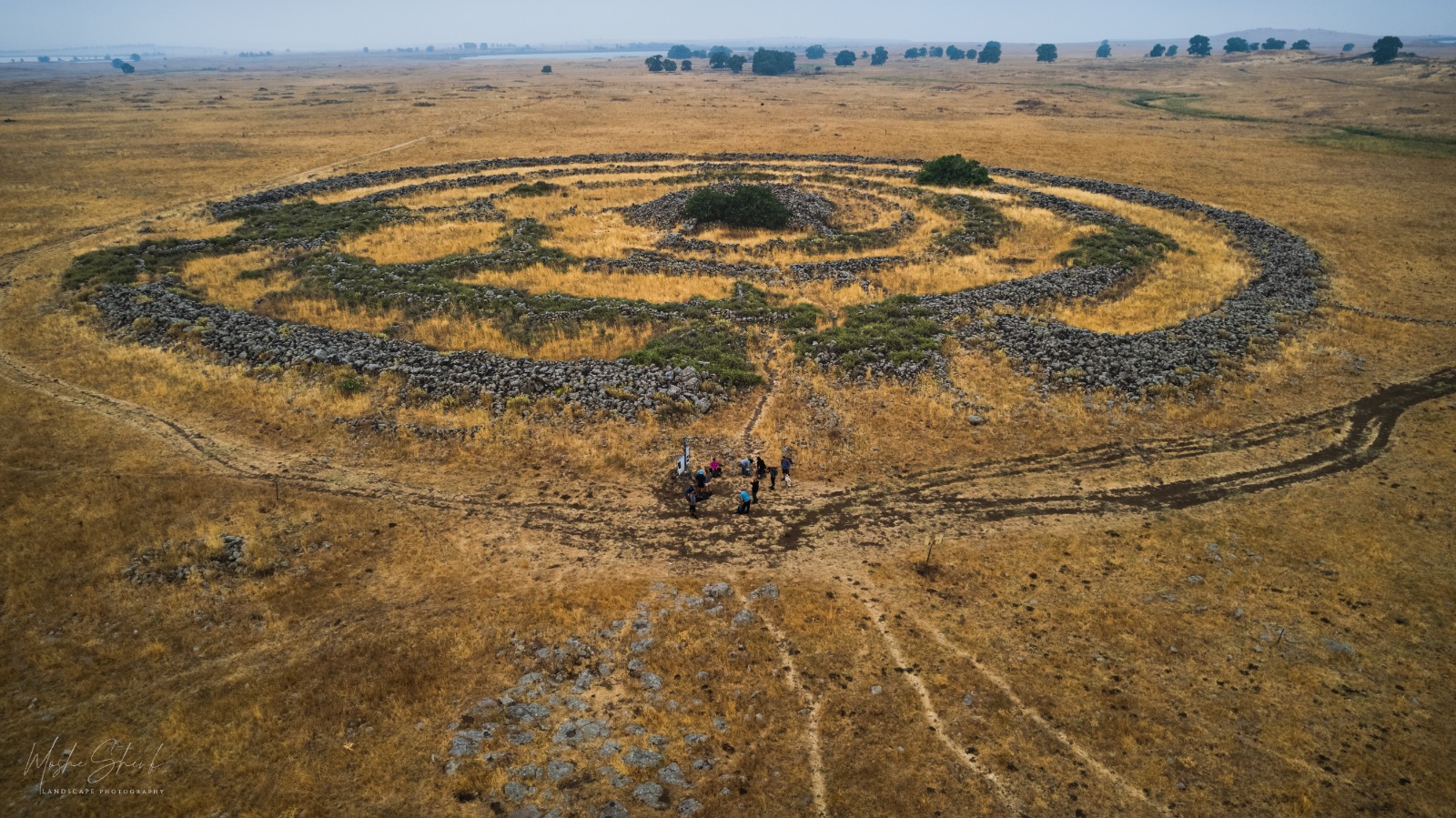
Cultural Significance, Dating methods, Theories and Interpretations
Unlocking the Age of Rujm el-Hiri
Elucidating the timeline of Rujm el-Hiri has been a challenge. Radiocarbon dating methods have been crucial. They suggest construction occurred during the Early Bronze Age, around 3000 to 2700 BCE. This places Rujm el-Hiri among the oldest known megalithic structures. Dating efforts rely on analyzing organic material from surrounding layers. Yet, without organic matter from the stones themselves, these dates are estimates, not precise markers.
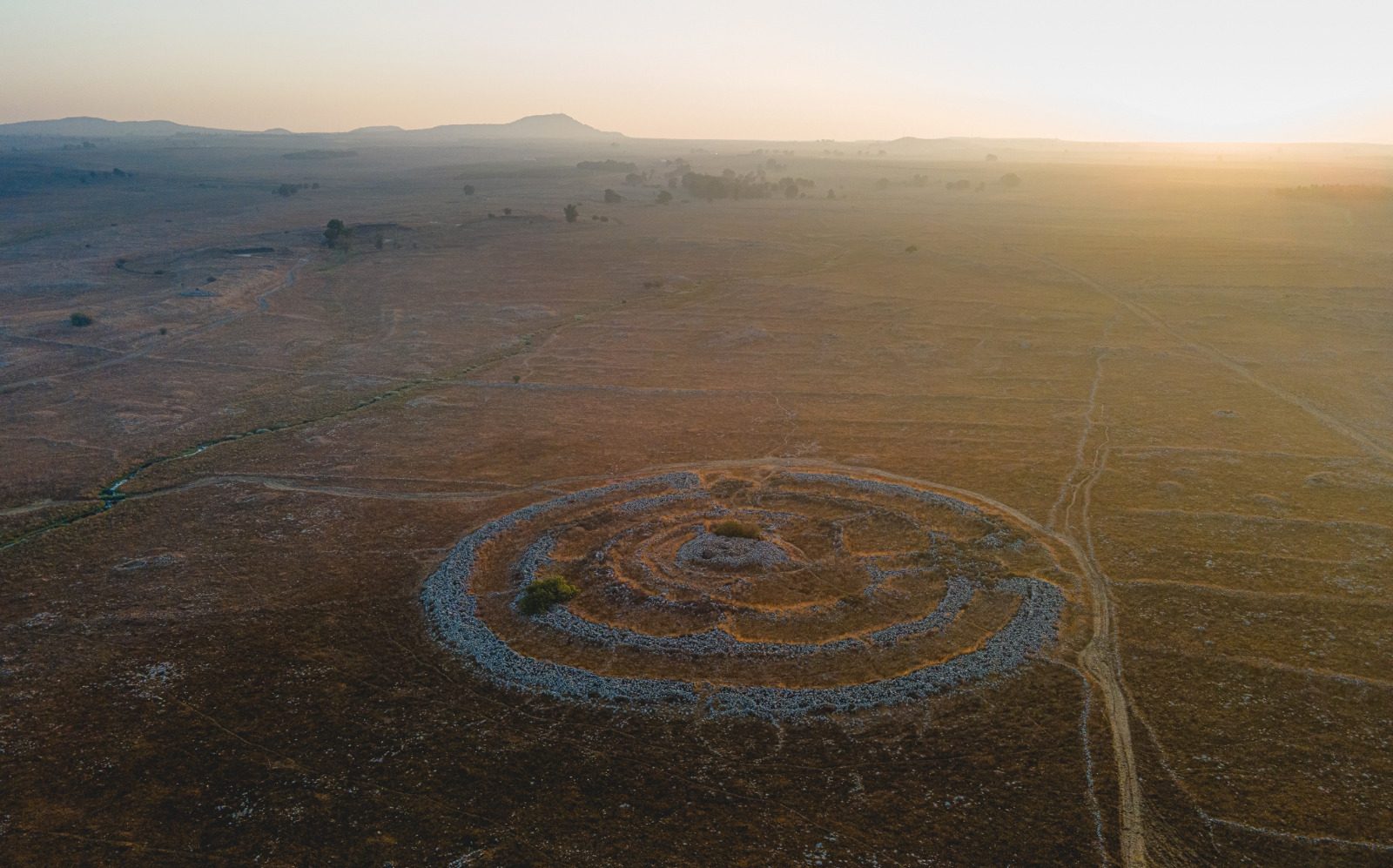
Interpreting the Megalith’s Purpose
Theories about Rujm el-Hiri’s original purpose are manifold. Researchers have proposed it was an ancient burial site, given the central cairn. Others argue for its role in astronomical observations, suggested by alignments with the solstices. Some even see it as a territorial marker or a place for ritual assembly. Without concrete evidence to back one theory, Rujm el-Hiri’s function remains an engaging riddle, prompting continuous study and debate.
Rujm el-Hiri holds significant cultural value. For local people, it’s a tie to a distant past and a source of folk tales. Meanwhile, scholars recognize it as essential for understanding the Levant’s prehistory. It represents human capability and the inherent desire to leave a lasting mark. This blend of archaeological interest and cultural attachment gives Rujm el-Hiri a complex, layered significance that resonates through time.
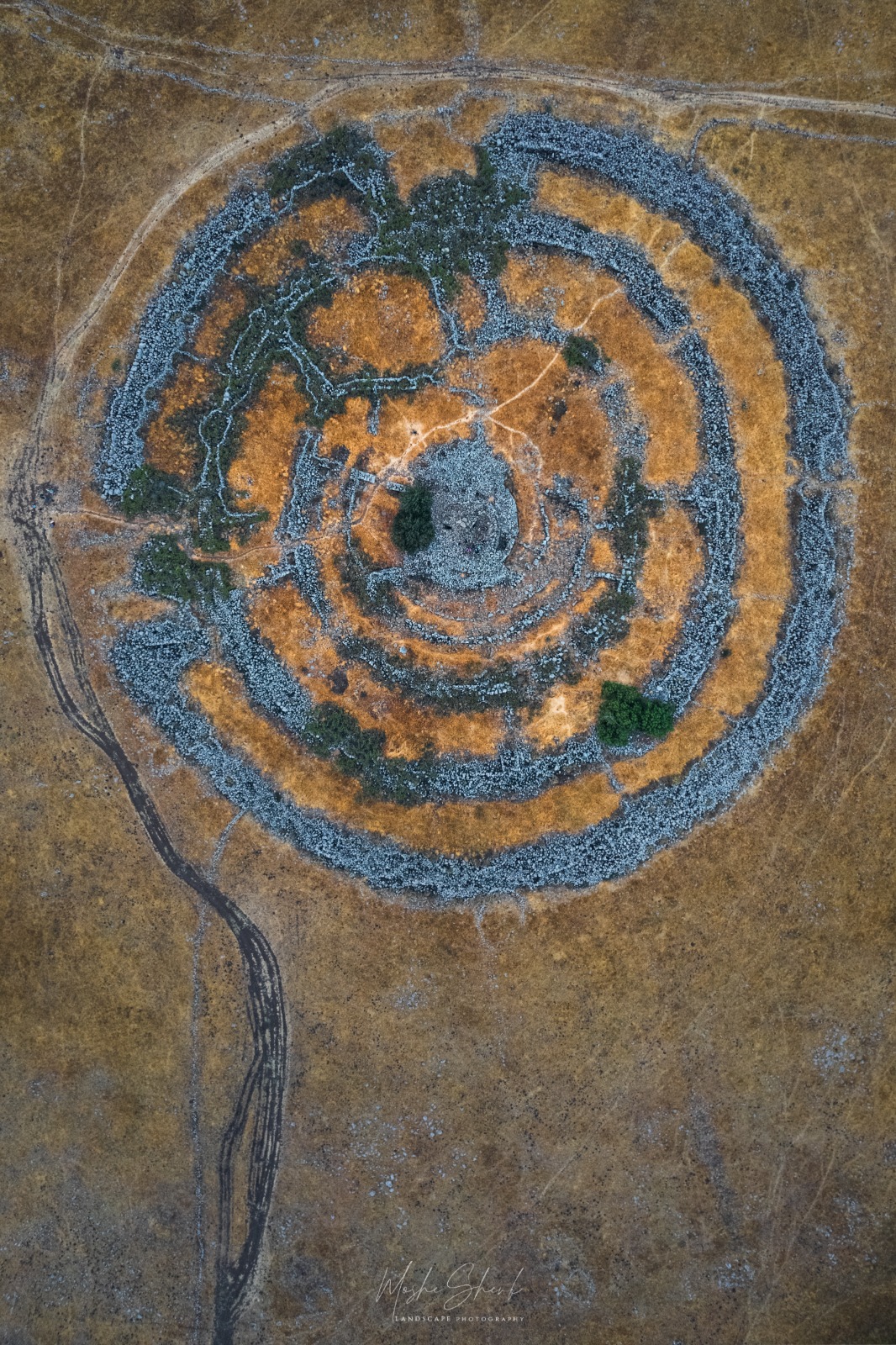
Challenging Traditional Historical Views
As a monument that predates the writing system, Rujm el-Hiri challenges our traditional views of history. It suggests complex social and religious behaviors took place long before recorded history. This has implications for how we consider the development of ancient civilizations. Rujm el-Hiri stands as a stark reminder that human history is likely older and richer than many standard accounts assume.
Interpretations of Rujm el-Hiri continue to evolve as new findings emerge. Every artifact unearthed and every soil sample analyzed brings potential for new insights. Researchers remain vigilant, aware that Rujm el-Hiri still has countless secrets to disclose. As understanding deepens, Rujm el-Hiri will undoubtedly further cement its place as a cornerstone of ancient Middle Eastern history.
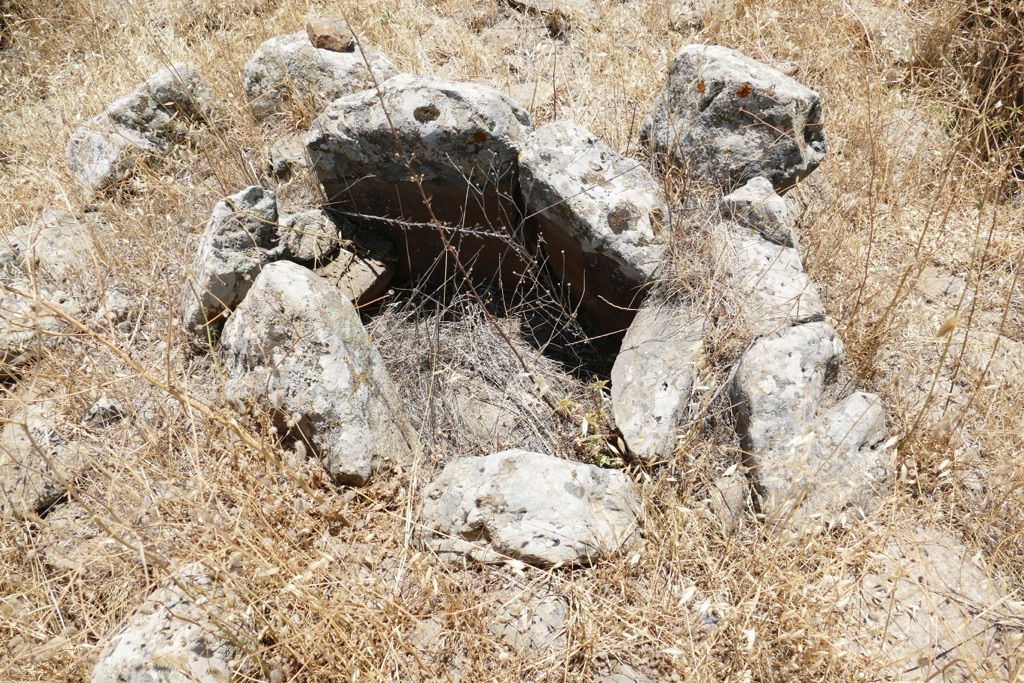
Conclusion and Sources
In the quest to understand the ancient world, Rujm el-Hiri stands out as a monumental enigma. With each layer of basalt stone and every theory put forward, this site captivates and challenges our understanding of ancient civilizations. Its precise astronomical alignments, massive scale, and the mysteries surrounding its builders and true purpose inspire ongoing research and fascination. Rujm el-Hiri serves not only as a window into the past but also as a reminder of the complexities of human history and the enduring desire to connect with our ancestors’ legacies. As excavation and analysis continue, perhaps future findings will shine light on the shadowed corners of this prehistoric marvel.
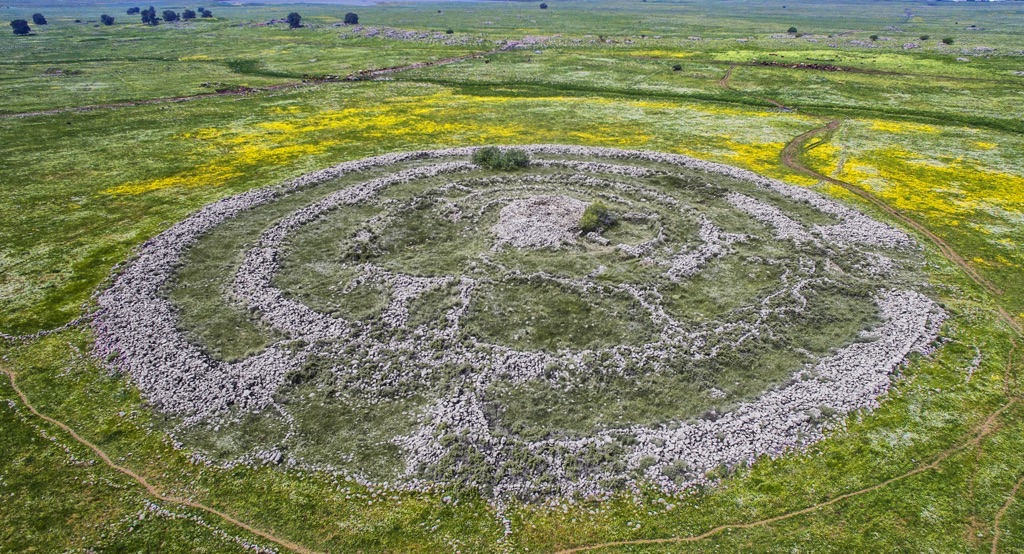
For further reading and to validate the information presented in this article, the following sources are recommended:
Or you can check any of these reputable archaeological and historical texts:
Gal, Z. (1998). ‘Rujm el-Hiri’, *Israel Exploration Journal*, 48(1/2), 65-66.
Ben-Tor, A. (1992). *The Archaeology of Ancient Israel.* New Haven: Yale University Press.
Mazar, A. (1990). *Archaeology of the Land of the Bible, 10,000-586 B.C.E.* New York: Doubleday.
Ronen, A., & Braun, E. (January 01, 1997). Gilgal Refāʾīm, the Rujm el-Hiri of the Golan, and Early Bronze Age Megalithic Astronomy. *Bulletin of the American Schools of Oriental Research*, (308), 27-43.
Yad Ben Zvi. (1986). ‘The Golan: A Profile of a Region during the Roman and Byzantine Periods’. Jerusalem: Yad Ben Zvi Press.

